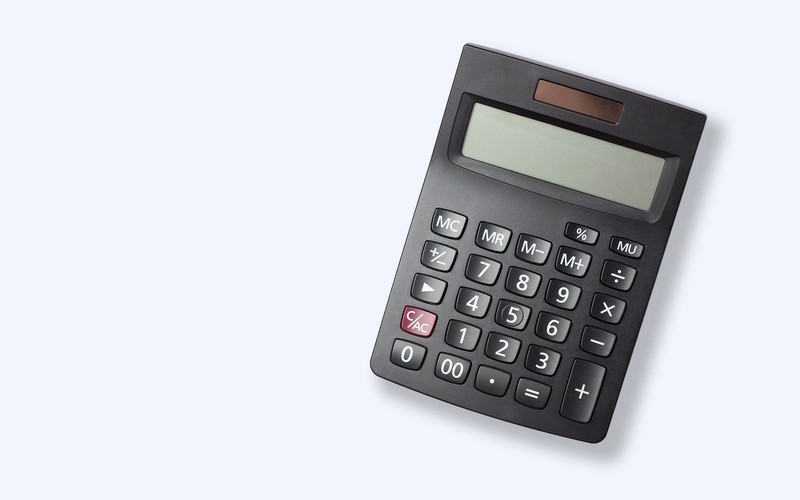As a commercial real estate investor, one of the key questions you’ll need to ask regularly is how your assets are performing. That is, how efficiently are you using the assets owned to generate profits? Being able to answer this question—and quantify it—can help you maximize your profits, minimize losses, and isolate any problem areas so you can fix them before they become a drain on your company’s resources.
Managers, analysts, and investors use several profitability ratios to assess a company’s profitability. These include return on assets, return on shareholders’ equity, gross profit margin, return on common equity, net profit margin, and return on equity.
In this article, we’ll be talking about Return on Assets or ROA—what it means, how to calculate it, and why tracking it is crucial to understanding the accurate measure of a company’s success.
What is ROA?
Return on Assets, sometimes called the Return on Assets ratio, is a measure of a company’s profit relative to its total assets. ROA is typically expressed as a percentage.
Simply put, the ROA shows investors or analysts how efficiently a company uses its assets to generate income. The higher this ratio, the better the health of a company. Think of it as a return on investment for the company—if you’ve put a certain amount of money into capital assets, you want to know how profitable those assets are and take stock if the cash flow is not as high as you would like.
For property investments, ROA is even more important to understand because property investments are often leveraged, and since they’re bought with invested capital, your returns can increase dramatically.
Calculating ROA
For the ROA calculation, you need two numbers:
- Net Income: You’ll need to calculate your property or company’s net income over a specific period. Net income or net earnings is the total revenue of the business minus expenses.
- Total Assets: This is the company’s total asset costs. How much did it cost to acquire or maintain these assets over the given period?
The ROA is calculated by dividing the Net Income by Total Assets and multiplying the result by 100.
The Return on Assets formula is
Return on Assets = (Net Income / Total Assets) x 100
There are some variations to the Return on Assets calculation. Net income, for example, can also be expressed as profit. Some companies also prefer to use average total assets instead of total assets in the ROA formula, as this considers that the company’s asset value can change over time.
(Average assets is equal to assets at the end of the time period minus assets at the beginning of the time period divided by 2.)
Understanding ROA
For businesses, understanding profit and its efficiency is a primary factor in decision-making. While there are many metrics to make this evaluation, the ROA is particularly useful because it considers a company’s available resources.
If the ROA were to reflect low efficiency in the use of resources, for instance, it would be wise to look at whether there’s an overall underperformance of resources or whether there’s a particular property or asset that’s an outlier. It’s important to note, however, that the baseline standards for ROA differ from industry to industry, so a number that’s considered a good Return on Assets for a public company may not have the same weight for a commercial real estate investor.
Here are some ways different companies use ROA in their analysis and decision-making.
- Determining efficiency: As we’ve already discussed, the key way in which companies use the ROA is to determine profitability and efficiency. To put it another way, the ROA helps a company see the amount of money earned per dollar of assets. A higher ROA signals greater health of the company.
- Industry comparison: Since ROA can vary widely between different industries, it’s not a good idea to compare the ROA of a software company with a hotel chain, for instance. Remember, too, that some industries—such as the hotel chain in our example—will have a greater need for assets to operate before they can realistically even turn a profit, indicating lower ROAs, especially in the early years of the business. However, within the industry and for similar companies, the ROA can provide an excellent guide to your company’s financial performance and how much potential there is to go higher.
- Performance review: Looking at the trajectory of the ROA over several years can give you a good indication of where the business is heading and whether any significant changes need to be made. If your ROA is going up substantially year-on-year, perhaps it’s time to acquire more assets to grow the company further. But if the trajectory declines, the company’s performance will need to be looked into.
What is a good ROA?
While no one metric can be considered a good ROA, and estimates vary widely across industries, the consensus seems to be that a ROA of over 5% is considered good, and anything over 20% is excellent.
In addition to the differences across industries, it’s also important to consider the time frame, the nature of the company’s business, and how long the company has been operating. Even within an industry, a company’s size matters, so a large-scale operation with a high investment in assets may have a different ROA expectation than a smaller company with limited resources.
These factors will play into a company’s ROA and must be considered when evaluating the final number. However, anything over 5% is considered a good benchmark and speaks well to the business’s health.
Limitations of ROA
As with all metrics, the ROA number isn’t perfect. While it’s a fantastic tool for tracking a company’s or business’s health, it’s important not to become overly reliant on this number. Some limitations of ROA include the following:
It can’t be used across industries
One of the biggest limitations of ROA is that it can’t be used as a metric for competitive analysis across industries. Since the ROA varies widely between a telecommunications firm, let’s say, and a commercial real estate investor’s holdings, it’s difficult to track how a business is doing in a wider environment outside of its industry and, sometimes, even the business itself. A high ROA in one industry and a low ROA may signal the same level of health but will look very different in their financial statements.
The formula is limited
Another concern experts voice about the ROA number is how it’s calculated. There are several variations to the calculation, as we discussed, and arguably, the calculation is better suited for larger institutions, like banks, where assets, liabilities, interest expense, and interest income have already been factored into the company’s balance sheet and income statements.
The formula starts falling apart for non-financial companies where debt and equity capital are clearly separated. While interest is the return for debt providers and the net income is the return for equity investors, the ROA formula compares the returns to equity investors (net income) with the total assets, which include the funds from debt investors.
It’s limited in scope
No one metric is perfect, and to get an accurate picture of a company’s health, it’s essential to consider the ROA in addition to a number of other financial ratios. In particular, the ROE or Return on Equity is an important one to consider.
Return on Equity (ROE) also measures how well a company is utilizing its resources, but while ROA takes into account all the company’s assets, including the capital that’s been borrowed to run operations, the ROE only considers the equity in the company. It leaves out the liabilities and doesn’t account for the debt.
This slight difference can mean a significant shift in numbers. For companies with leveraged debt, the Return on Equity ratio will be higher than the ROA.
The bottom line
ROA is an important measure of the health of an enterprise, especially relative to its total assets. Whether you’re a public company or a real estate investor, it’s worth taking the time to calculate and understand the ROA of your business so that you can utilize your assets as efficiently as possible.
If you’re ready to take your first steps into real estate investing—or consider a more hands-off approach—look no further. At Arrived, our mission is to give everyone—regardless of their background and income levels—the chance to get on the property ladder. Through our platform, you can purchase shares of rental properties for as little as $100 and start building a portfolio—and a rental income—today. Browse through our available properties here.







